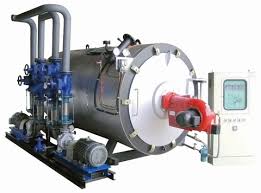
Nov . 12, 2024 12:28 Back to list
high pressure steam boiler
Understanding High-Pressure Steam Boilers Principles and Applications
High-pressure steam boilers are critical components in various industrial applications, providing steam that serves essential functions in manufacturing processes, heating, and power generation. These systems operate at pressures significantly higher than atmospheric pressure, making them vital for industries such as power generation, chemical processing, and food production. Understanding the principles behind high-pressure steam boilers, their components, and their applications is fundamental for anyone involved in the engineering and maintenance of such systems.
Principles of High-Pressure Steam Boilers
At its core, a high-pressure steam boiler is designed to convert water into steam through the application of heat. The basic principle involves heating water in a closed vessel to create steam, which can then be utilized for various purposes. The high-pressure aspect refers to operating pressures typically exceeding 15 psi. These designs must adhere to stringent safety regulations due to the potential hazards associated with high pressure.
The process begins with water being fed into the boiler, where it is heated by nearby combustion gases or electric elements. The combustion process usually involves burning fossil fuels, such as natural gas or oil, or using biomass and solid fuels. The heat produced causes the water in the boiler to vaporize, forming steam. As the steam pressure increases, it can be used to perform work—such as turning turbines or driving industrial machinery—resulting in energy generation or heating applications.
Components of High-Pressure Steam Boilers
Several essential components work together to ensure the efficient operation of a high-pressure steam boiler
1. Burner This component ignites the fuel and mixes it with air to create a flame that heats the water. The design of the burner affects combustion efficiency and emissions.
2. Drum The drum is the vessel where steam and water separate. In high-pressure boilers, the drum is often larger and more robust to withstand the elevated pressures.
3. Steam Separator Located within the drum, the steam separator helps separate steam from water, ensuring that only dry steam is delivered for end-use applications.
4. Superheater This component raises the temperature of the steam above its saturation point, resulting in superheated steam that is beneficial for certain industrial processes.
high pressure steam boiler

5. Safety Valves Safety is paramount in high-pressure systems. Safety valves prevent excessive pressure build-up by releasing steam when pressures exceed safe limits.
6. Feedwater Pump Essential for maintaining the water level in the boiler, feedwater pumps deliver water into the system and compensate for the steam that has been generated.
Applications of High-Pressure Steam Boilers
High-pressure steam boilers are versatile and employed across many industries. Some notable applications include
- Power Generation High-pressure steam boilers are crucial in thermal power plants where steam is used to drive turbines, generating electricity. The high efficiency and reliability make them a preferred choice for energy production.
- Chemical Manufacturing Many chemical processes require high-temperature steam as a heat source. High-pressure boilers are used in reactions, distillation, and other processes where steam is integral.
- Food Processing In the food industry, steam is essential for cooking, sterilization, and heating processes. High-pressure boilers provide the necessary steam output to ensure efficiency and safety in food production.
- Textile Manufacturing Steam is vital in textile production for dyeing, finishing, and other processes. High-pressure boilers ensure a continuous supply of steam to maintain production schedules.
Conclusion
High-pressure steam boilers are fundamental to numerous sectors, providing a reliable source of steam for various applications. As industries strive for greater efficiency and sustainability, advancements in high-pressure boiler technology, including improved materials and fuel alternatives, may further enhance their functionality. Understanding the principles and components of these systems is vital for engineers, operators, and maintenance personnel to ensure safe, efficient, and effective operations in today’s industrial landscape.
-
High-Efficiency Commercial Oil Fired Steam Boiler for Industry
NewsJul.30,2025
-
High-Efficiency Biomass Fired Thermal Oil Boiler Solutions
NewsJul.30,2025
-
High Efficiency Gas Fired Thermal Oil Boiler for Industrial Heating
NewsJul.29,2025
-
High-Efficiency Gas Fired Hot Water Boiler for Sale – Reliable & Affordable
NewsJul.29,2025
-
High Efficiency Biomass Fired Hot Water Boiler for Industrial and Commercial Use
NewsJul.29,2025
-
High-Efficiency Biomass Fired Hot Water Boiler for Industrial Use
NewsJul.28,2025
Related PRODUCTS






















